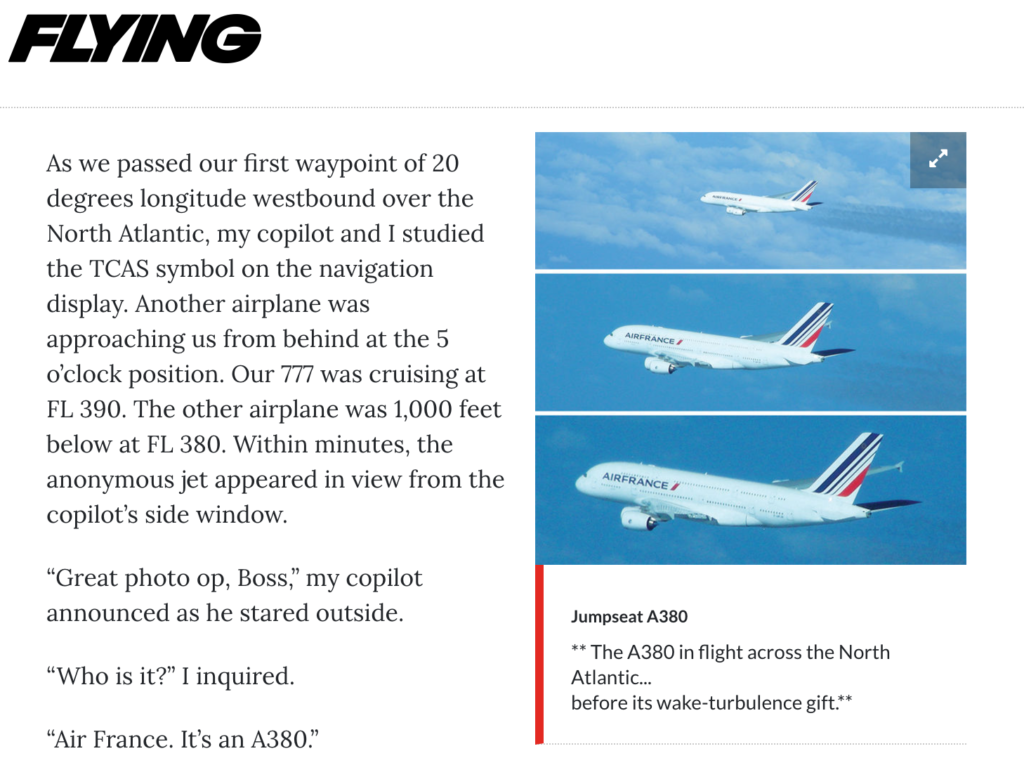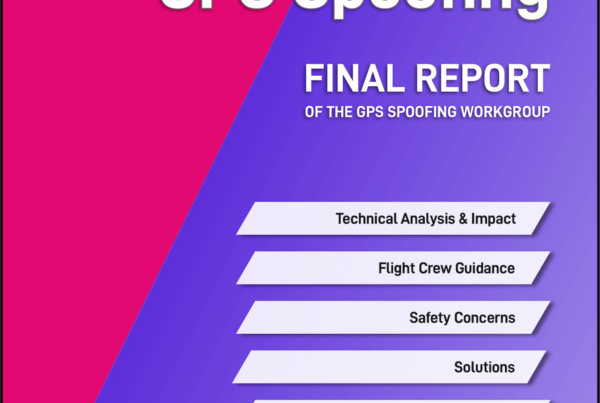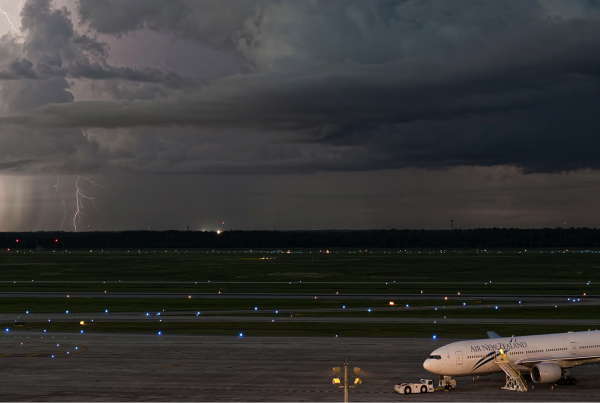The Challenger 604 vs Airbus 380 story has gone once around the world.
But is it even true? Some have asked. Let’s do a reality check.
After our initial story was published in last weeks International Operations Bulletin, which we first monitored thanks to the great work of the Aviation Herald, it was republished in various versions in The Times of London, Flying magazine, AIN Business Aviation News, Deutsche Welle, and NBC. The picture on the Flight Service Bureau facebook page was viewed 1.1 million times.
First, the picture.
The incident happened. This has already been confirmed by the German BFU, who have responsibility for investigating accidents. The Canadian TSB have assigned an accredited representative to the investigation, and Bombardier have assigned a technical advisor.
So to the cause. The crew reported that 1-2 minutes before the loss of control, at about 0840 UTC, an Airbus A380-800 had passed overhead, slightly to the left. The Aviation Herald’s reporting is of the highest standard, and we trust their source.
Like the Aviation Herald, we also deal in facts. Joining the dots to form the bigger picture doesn’t require Colombo on the job.
- The incident happened on January 7th, since which time the German BFU have been aware of the case.
- The story has been out in the aviation community since February 7th, when it was posted that: “A CL604 enroute Male to Europe, upset by opposite direction, 1,000′ above, A380’s wake. Several rolls, large G excursions. Diverted into Muscat.”
Since the authority, manufacturer, and operator are all aware of the story, it is reasonable to deduce that were a material part of the widely reported incident not true, then that would have been stated rather quickly.
The ultimate confirmation will come from the Germany BFU, hopefully on this Interim Reports page.
The Boeing 757 parallel
On Sunday, we reported the similarity between this A380 story, and the 10 years it took to determine that the Boeing 757 had a wake 1.5 times stronger than other similar aircraft.
Our primary interest here at Flight Service Bureau is keeping the International Flight Operations community safe and informed. Consider this opening line from the New York Times on Dec 23rd, 1993:
Nearly a year after being alerted to the problem, the Federal Aviation Administration has ordered air-traffic controllers to warn aircraft flying behind Boeing 757 jets of the potential for dangerous wake turbulence. In the last year, two crashes that together killed 13 people have been attributed to turbulence caused by Boeing 757's. In the more recent crash, on Dec. 15, five people were killed when their private jet went down in Orange County during a landing approach"
Wake Turbulence Enroute
The entire topic of wake turbulence is not fully understood by any of us. There is much more to learn. Truly innovative studies were last done back in the 1970’s. Some experienced crews have even questioned whether enroute wake turbulence even exists. Flight school drills into us as pilots, that wake lives around the airport. “Heavy, clean and slow” are the dangerous ones. But “slow” means about about 150 knots for aircraft like the 380. In the cruise, that goes up to about 250 knots IAS at the higher altitudes. If 150 knots is slow, then 250 knots isn’t really “fast”.
Before the crash of a Delta Tristar at DFW in 1985, we didn’t know much about windshear and microbursts. Maybe we have to learn the same lesson with enroute wake.
In Flying magazine, Les Abend has a very readable example of enroute wake in this article.
And here are some other examples of enroute wake turbulence encounters:
- Air Canada, FL370, 55 degree roll at FL370 – wake from Boeing 747
- Virgin Australia, FL350, 45 degree bank – wake from A380
- American Airlines, FL220, bang – wake from B777
- Air France, FL360, 25 degree bank – wake from A380
- United Airlines, FL240, severe turbulence – wake from MD11
- British Airways, FL320, 30 degree roll – wake from A380
- Antonov 124, FL320, 15 degree roll, altitude loss – wake from A380
- Vueling, FL320, sudden 40 degree right bank – wake from A340
- Japan Airlines, E170 – uncommanded increasing roll to left – wake from A340
- Armavia, A320 – A/P disconnect, steep banks – wake from A380
Note to Members #24 – Wake Turbulence Enroute
While the industry awaits further guidance from the authorities, Flight Service Bureau has made public its Note to Members #24 (normally restricted to OpsGroup circulation). Revised 22MAR2017.
Key points from our Note:
- We might be wrong! Like we said above, there is much still to learn about enroute wake. Read the note, but make up your own mind.
- Consider the wind. The danger point is roughly 15-20nm after the crossing point, as this is when the wake will have drifted down 1000 feet. In stronger winds, the wake may have drifted well away from the centreline. A turn away may not be necessary.
- SLOP where possible. It may not prevent all situations, especially crossing traffic, but if you’re 2nm right of track you’re a lot less likely to be directly underneath another aircraft.
- Read the note for the full guidance, and tell us if you have any further thoughts.
More on the topic:
- More: Wake Turbulence: See You On The Flip(ped over) Side
- More: The 511 on the Nov 5th ICAO changes
- More: Airbus 380 flips CL604 – full report is now published
- More: This is what an Airbus 380 looks like when it’s coming to get you
- More: A lesson in emergency handling, from Aer Lingus
More reading:
- Latest: Mexico Customs Surprises: Pills, Vapes, and Laptop Rules
- Latest: Greenland NAT Alternates: Dec 2025 Update
- Latest: Crossing the Quiet South: From Australia to Argentina
- Safe Airspace: Risk Database
- Weekly Ops Bulletin: Subscribe
- Membership plans: Why join OPSGROUP?













 Get the famous weekly
Get the famous weekly 





CORRECTION TO THE CL community: I apologize I wrote CL605, I meant CL604
I stand corrected sir!
Better to set the record straight on an Internet forum before an anal- r*taaard cuts of my head and “virtually” sh!ts down my throat.
I’m not good at counting windows, I just know gulfstream windows because they are big, they have been less than 10. If the window count is 11-20 I gotta remove my shoes n socks to count. God forbid an aircraft has 21 windows, that would require me to remove my pants. More than 21? I’m a$$ wholes and elbows. LOL
ENJOY WHATEVER IS LEFT OF THE WEEKEND WHEREVER YOU ARE. and happy holidays to anyone anywhere celebrating anything around this time of year
ROFLMAO
Instead of the entire industry SLOPing, let the 380s slop themselves down wind
A lot less of them but a lot more of us. This isn’t the jungle where we get out of the way for us. Let the elephant get out of our way. LOL
To the GIV Dude, I drive a GIVX and I usually drive FL410-FL450 plus we have nice long wings compared to the short midget wings on a fat CL605 body, wing span matters. Furthermore sometimes pilots can overstress the bird by over fighting it or by incorrect input like the AA dudes in queens NY.
I’m not qualified to play CSI flying aluminum city on internet message boards. I’ve lost dear friends in high profile mishaps that made CNN/BBC in recent years and I would recommend we put the soap box in the garage, learn from this, take a chill pill, and stop playing flying Colombo on late night TV
Wise words from the A330 Pilot above:
“What I have come to realise is that while the industry is still trying to figure out the consequence of A380 wake we need to take precautions”
AirAusquin, I say again, I’ve hit heavy and even super wakes on more than one occasion. No, it’s not pleasant and yes I go out of my way to avoid it whenever possible. But at worst, all I’ve ever experienced was a momentary roll excursion or heavy bump.
This airplane lost 10,000′ of altitude and was said to have been rolled “3-5 times”? Sorry, I simply do not buy that this was just a wake encounter. Perhaps it was initiated by a wake encounter, but that’s not what caused all the excessive rolls and altitude loss.
Hi , I am an A330 pilot and have experienced, sudden bump wake from an A380 twice in Muscat airspace (severe turbulence). Once while the aircraft crossed right to left and the ATC thought they had provided adequate separation and second on a reciprocal track whilst the A380 crossed above 1000ft. What I have come to realise is that while the industry is still trying to figure out the consequence of A380 wake we need to take precautions. I always maintain 1 or 2 miles into the wind lateral separation from track in Muscat airspace. They always ask me a reason , and I say to ‘avoid possible wake’. You need to only go thru this once and an A330 is a 230 tonne plane. Fundamentally , I have realised if you have a light cross wind component that matches the lateral movement of the wake then it will hit you 15 miles later. Hope this helps. Safe flights all… Its the best job in the world 🙂
Hear Hear. Whatever the outcome of this German report, I’ll be thinking twice next time I pass 1000 feet under a 380. Thank you FSB!! You are doing great work for all of us!!
GIVPilot, literally, we are comparing apples to watermelons here! All the incidents listed refer to airliners being affected by the wake of bigger airliners. Even a mighty An124 was affected. The accident being discussed is about a bizjet. As a GIV pilot you should be even more concerned that an airliner pilot.
Planes involved were:
A319 vs B747
B738 vs A380
A300 vs B777
A320 vs A388
B737 vs MD11
A320 vs A388
An124 vs A388
A320 vs A340
E170 vs A340
A320 vs A380
To MidATC: Yes, 55* rolls are extremely tame when compared to “3-5 complete rolls” and a loss of more than 10,000′ of altitude.
Brazil is already applying 2000 feet separation between A380 and other aircraft.
To GIV Pilot Tame? 55 degrees rolls and uncommanded 45 degree banks are not tame. I just read the Air Canada incident – ‘Three of the 88 occupants sustained serious injuries and eight sustained minor injuries as a result of falls and collisions with aircraft furnishings.’
This thing is a real story, you withhold your judgement but the rest of us will be withholding going anywhere near a 380.
Something definitely happened to this aircraft, but the claims I’ve read have been too widely varied for me to believe any one 3rd party media source.
Some sources say that both engines on the Challenger flamed out, while others claim that only one engine was shut down by the crew due to high ITT, and later restarted.
Some say 3 complete rolls, others say 5. Etc.
Also, all the examples of enroute wake turbulence encounters listed in your article were extremely tame in comparison to what supposedly happened to this airplane. None resulted in anything more than turbulence or momentary uncommanded roll excursions.
Having had several wake turbulence encounters myself, and in airplanes of similar size to the ones in this incident, I can think of no good cause or reason for the airplane to be so wildly out of control for such an extended period of time.
I would like very much to read the CVR transcripts and see the FDR data, should they ever be released to the public.
I will withhold judgment until such time as official findings have been released, but at this point, there are far more questions than answers.
Thank you, you’re right! Updated.
One small correction to your article: the Delta Airlines Tristar crash at Dallas happened in 1985, not 1983.